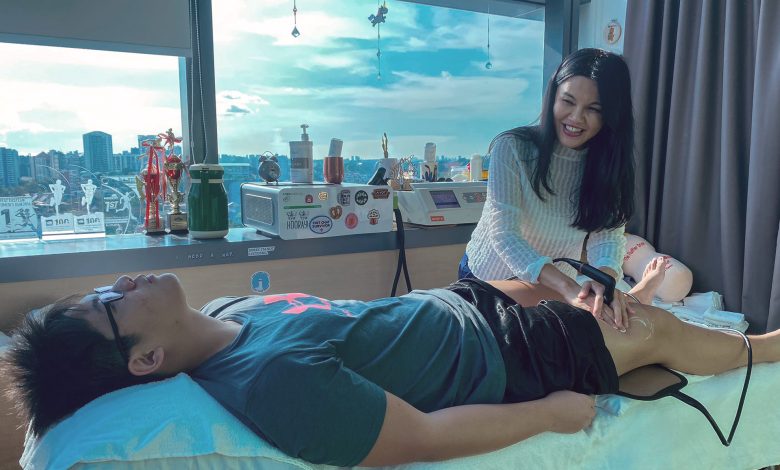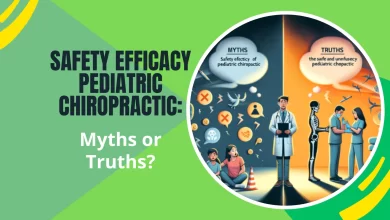Getting Treatments for Musculoskeletal Conditions in Singapore

The Orthopaedic and Pain Practice is a specialized medical practice designed to treat patients with musculoskeletal pain and orthopaedic conditions. It offers outpatient consultation, investigation, and treatment, as well as inpatient surgical services for patients who require further care in a hospital setting. At the center of the practice is the interventional pain management procedure so that physicians can provide both a diagnostic and therapeutic treatment plan catered to the patient’s specific musculoskeletal pain.
In addition, it also has the support of in-house X-ray and physiotherapy services. A group of dedicated professionals including orthopaedic, radiology, physiotherapy, and nursing, all with vast experience in their fields, share the common aim to provide the best care possible using the most advanced and up-to-date techniques and cutting-edge technology available.
Overview of the Practice in Singapore
Singapore is a rapidly aging society, and musculoskeletal disorders such as osteoarthritis and back pain are important contributors to the increasing burden of chronic pain. Orthopaedics is the medical specialty for the whole musculoskeletal system in medicine. It specializes in the diagnosis and treatment of musculoskeletal diseases and injuries. Some of the most important subspecialties are arthritis, joint replacement surgery, sports injury, pediatric orthopaedic surgery, trauma and spine injuries, and hand and limb deformity surgery. Pain management has its roots in anesthesiology and technical skills in fluoroscopic imaging to guide injections and simple interventional procedures. The specialist and aspiring specialists in both areas have to undertake further training and formal examinations in the procedures specific for diseases of the relevant areas of the musculoskeletal system. Knowledge has to be acquired in both medical and interventional skills aspects in managing chronic pain of the targeted subspecialties such as the cervical, thoracic, and lumbar regions of the spine, and neurolysis of both peripheral and peripheral sympathetic nervous systems.
Understanding Lower Back Pain
Experiencing lower back pain after standing too long is a common issue that many people face and should be addressed with proper ergonomic practices. Lower back pain is extremely common and can result from a variety of causes such as poor posture, over-exertion, trauma, accident, and aging. Too much time studying, working at the computer, watching TV or standing could contribute to a cause of lower back pain. Sometimes other conditions, such as infections or even tumors may cause lower back pain, but these are less common. If one or more of the location of the associated symptoms occurs in the legs, these are called sciatica. These additional symptoms such as leg pain, weakness, or numbness could be from a nerve in the lower back being compressed, irritated, or stretched. The low back or the back of the legs, as well as the senses that are in the area covered by the nerve, could be painful. The patient can feel numbness, tingling, and weakness in the leg. However, if the first signs of a nerve that runs from the hip to the toes and all these conditions were more in the back of the thighs or go in the soles of the feet, the sciatica is not the result of the root nerve of L5 but can go on the side of the legs. For some lower back pain conditions, the exact cause of the pain cannot be identified due to multiple contributing factors.
Causes of Lower Back Pain
Most acute low back pain is musculoskeletal. It is mostly due to overload or acute trauma from poor posture or improper lifting or carrying of heavy loads. Two of the most frequent issues are back injuries and the strain caused by the big muscles, ligaments, and joints of the lower back. While these pathologies may take a variety of forms, herniated or “slipped” lumbar disks are the most frequent sources of low back pain. The intervertebral disks have a jelly-like inside filling that can bulge out and put pressure on the nerves of the back due to injury. Pain may range from mild, persistent back pain to severe, sharp pain due to muscle spasm. The strain brought on by these nerve irritations and muscle spasms may produce other unpleasant symptoms, such as numbness and a sense of weakness in the legs.
However, if back discomfort persists, sufferers should see a physician. This visit may include re-evaluating the pain using plain X-rays and scans as well as using various diagnostic MRI or computed tomography. When it comes to therapy, no major issues often come. Concepts and medical steps are tailored to the individual’s medical history and general health, how long the patient has had the abnormality, previous care therapies, and whether other factors, such as chronic back discomfort, might be already in play.
There are numerous medical treatments accessible for low back pain; many of them are nonsurgical, such as pharmaceuticals, bed rest, or ergonomic modifications. In the case of bed rest and ergonomics, these recommendations will be for you to care for yourself at your house.
Treatment Options for Lower Back Pain
The treatments available vary, including mechanical treatments, surgery, drugs used for symptoms, physiotherapy, chiropractic services, and other alternative treatments such as acupuncture. Treatments should be sought through your general practice or by visiting an orthopedic surgeon directly. Long-standing pain has a higher chance of becoming chronic and can be more difficult to treat. It’s important to use correct form to avoid lower back pain deadlift injuries during your weightlifting sessions.
Specialized Treatments Offered by Orthopaedic Surgeons
Many different types of treatments apart from medications are provided to patients who are cared for by the orthopedic surgery. Such treatment offered by orthopedic centers can include prescribing medications and rehabilitative exercises, performing surgeries to replace bones and joints, repairing broken and dislocated bones, and providing treatment for athletes who are experiencing problems with their feet and/or knees. Experts in musculoskeletal care with the discipline of orthopedic surgery plan to provide effective and efficient care directed towards the physiological conditions of the patient. Care provided by the orthopedic surgeons is mainly intended to help the patient regain or improve their health. This opinion states that orthopedic surgeons provide care to a person whose bones are healthy or to those whose bone health is unfavorably compromised. Understanding lower back pain causes and treatment can help you find effective relief and prevent future discomfort.
Options for Severe Musculoskeletal Conditions
The use of orthopedic surgeries used to treat trauma, sports injuries, degenerative diseases, infections, etc. in numerous parts of the musculoskeletal system are performed by the use of invasive orthopedic surgical machines. Such tools include arthroscopy systems, tissue repair instruments, etc. Arthroplasty refers to the surgical regulation of the joint through operative materials like allografts and autografts, xenografts, ceramics, etc. In addition, the usage of visual systems and surgical bots in total joint replacement and soft tissue protection also minimizes patient invasion. However, the determination of the precise location of the surgery and the distinct value of bone resection technology are associated with more extensive surgical intervention.
For individuals who are diagnosed with osteoarthrosis, it may eventually lead to the deformity of the knee joint due to the unequal loss of articular cartilage at different sites. Aged individuals with this condition can opt for knee osteotomy. The primary aim of osteotomy is to shift the peak pressure to the non-arthritic chondral region and alleviate pain. The precise preoperative evaluation of radiography and osteotomy templates for knee anthropology are the required procedures before the osteotomy.
Spinal fusion is commonly performed in orthopedic surgeries to mimic the normal function of the spine. Severe spine conditions such as degenerative spondylolisthesis, disc herniation, and spinal stenosis can be treated through spinal fusion. During spinal fusion, one disc space is used as a platform to place a spacer and notched bone contribution concurrently. In addition, the use of a promontory spacing device and local bone graft (autograft and/or allograft) supports the process of spinal fusion. Patients must follow medical and clinical instructions to support a positive spinal fusion outcome.




